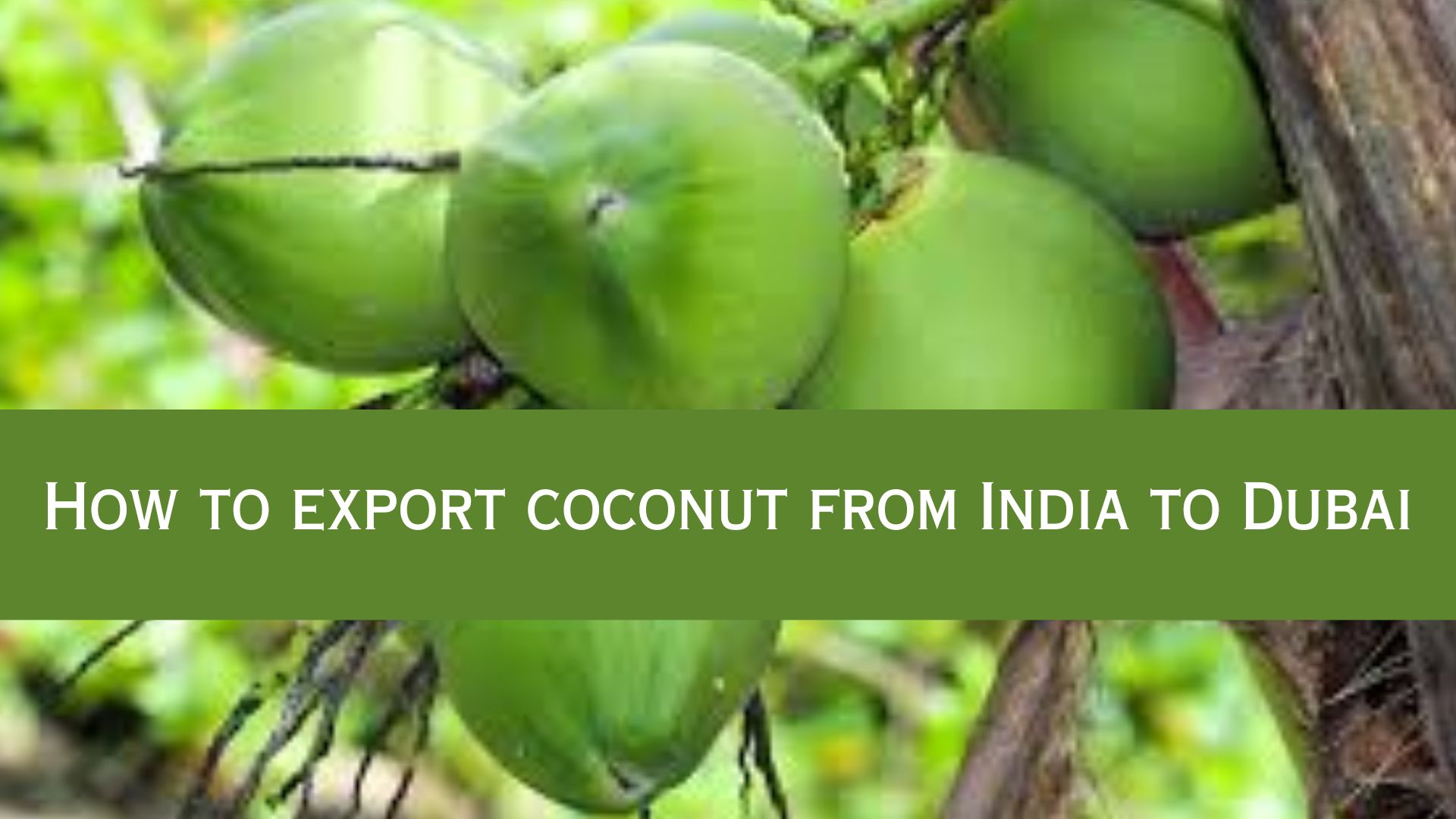Coconut is one of the most
important agricultural products of India, with an annual production of about
21.9 billion nuts. It is widely used for food, oil, fiber, and other industrial
purposes. Dubai, on the other hand, is a major importer of coconut and its
products, with a demand of about 120,000 metric tons per year. The coconut
trade between India and Dubai combines India's rich coconut industry with
Dubai's never-ending need for this adaptable tropical treasure. India stands as
a prominent global player in coconut cultivation, boasting vast plantations
across its coastal regions.
Exporting coconut from India to
Dubai can be a lucrative business opportunity, but it requires careful planning
and execution. In this blog, we will discuss the steps involved in exporting
coconut from India to Dubai, such as market research, product selection,
packaging, documentation, transportation, and customs clearance.
Understanding Export
Regulations and Requirements
Exporting coconuts is a lucrative
business, but it also involves complying with various rules and regulations.
Before you start exporting coconuts, you need to do some research and
understand the export requirements of both your country and the destination
country.
Consider the following factors:
- The quality and safety standards of the
coconuts. You need to ensure that your coconuts meet the specifications and
requirements of the destination country, such as size, weight, color, ripeness,
etc. You may also need to obtain certificates or inspections from relevant
authorities to prove the quality and safety of your coconuts.
- The tariff and non-tariff barriers of the
destination country. You need to be aware of the customs duties, taxes, quotas,
subsidies, licenses, permits, or other restrictions that may apply to your
coconuts. You may also need to provide documentation or information to support
your export declaration, such as invoices, packing lists, certificates of
origin, etc.
- The export licenses and permits of your country.
You need to obtain the necessary authorization from your government or other
agencies to export coconuts. Depending on the type and quantity of coconuts you
are exporting, you may need different licenses or permits, such as
phytosanitary certificates, export permits, health certificates, etc.
Exporting coconuts can be a
complex and challenging process, but it can also be rewarding and profitable if
you do it right. By researching and adhering How to export coconut from
India to Dubai to the export regulations and requirements of both your
country and the destination country, you can ensure a smooth and successful
export operation.
How to export coconut from
India to Dubai?
Exporting coconut from India to
Dubai involves several steps and considerations, as it requires adherence to
international trade regulations and quality standards. Here's a high-level
overview of the process:
1. Market Research and
Preparation:
Research the Dubai market to understand the
demand for coconuts and potential competitors. Ensure that your coconuts meet
the quality standards and preferences of the Dubai market.
2. Legal and Regulatory
Requirements:
Understand the export regulations
and requirements imposed by both the Indian and UAE governments. This includes
obtaining necessary licenses, permits, and adhering to phytosanitary standards
to ensure the coconuts are disease-free.
3. Quality Standards:
Make certain that your coconuts
meet international quality requirements. They should be of uniform size, shape,
and color, and free from any damage or disease. Consider obtaining
certifications such as Global Good Agricultural Practices (GlobalGAP) or Hazard
Analysis and Critical Control Points (HACCP).
4. Supplier Identification:
Identify reliable suppliers of
coconuts in India. Choose suppliers who can consistently provide high-quality
coconuts and meet the required quantity.
5. Packaging:
Proper packing is essential for
avoiding damage during delivery. Coconuts should be packaged in a way that
ensures their freshness and prevents contamination.
6. Documentation:
Prepare all necessary export
documentation, including invoices, packing lists, certificates of origin,
phytosanitary certificates, and any other documents required by the UAE
authorities.
7. Shipping and Logistics:
Choose a reliable freight forwarder
who has experience in exporting goods from India to Dubai. They will help you
with shipping arrangements, customs clearance, and ensuring timely delivery.
8. Customs Clearance:
Work with your freight forwarder
to navigate the customs clearance process. Ensure that all required
documentation is submitted accurately to avoid any delays or issues at the
border.
9. Import Regulations in Dubai:
Familiarize yourself with the
UAE's import regulations for coconuts. Ensure compliance with labeling,
packaging, and other regulations specific to the destination country.
10. Distribution and Marketing:
Once your coconuts reach Dubai,
work on distributing them to retailers, wholesalers, or other buyers. Establish
relationships with potential buyers in advance and consider attending relevant
trade shows or networking events.
11. Payment and Currency
Exchange:
Decide on the terms of payment
and currency exchange with your buyers in Dubai. Ensure that you understand the
applicable exchange rates and any associated fees.
12. Follow-Up:
After the initial shipment,
maintain communication with your buyers in Dubai. Gather feedback on the
quality of the coconuts and their reception in the market. How to export
coconut from India to Dubai will help you improve your export process in
the future.
How do I register an
import-export code?
An import-export code (IEC) is a
10-digit number that is required for any business or individual who wants to
engage in international trade. The IEC is granted by the Directorate General of
Foreign Trade (DGFT) of the Ministry of Commerce and Industry. To register an
IEC, you need to follow these steps: - Visit the DGFT website and click on the
'Services' tab.
- Select the option 'IEC' and then 'Online IEC Applications.
- Fill in the online application form with your
personal and business details, such as name, address, PAN, bank account, etc.
- Upload the required documents, such as PAN card,
passport, bank certificate, etc.
- Pay the application fee of Rs. 500 through
online mode or demand draft.
- Submit the application and wait for the
verification and approval process.
- Once approved, you will receive your IEC number
through email and SMS.
You can also check the status of
your application online by entering your PAN and file number. The IEC is valid
for a lifetime and does not require any renewal.
Conclusion
Exporting coconuts from India to
Dubai is a venture laden with potential, but it requires careful planning,
adherence to regulations, and a commitment to quality. By conducting How to
export coconut from India to Dubai thorough research, maintaining high
standards, and collaborating with reliable partners, you can tap into Dubai's
thriving market and introduce the goodness of Indian coconuts to a global
audience. Remember that each step in the process is crucial, and attention to
detail will be the key to your success in this exciting export journey.

